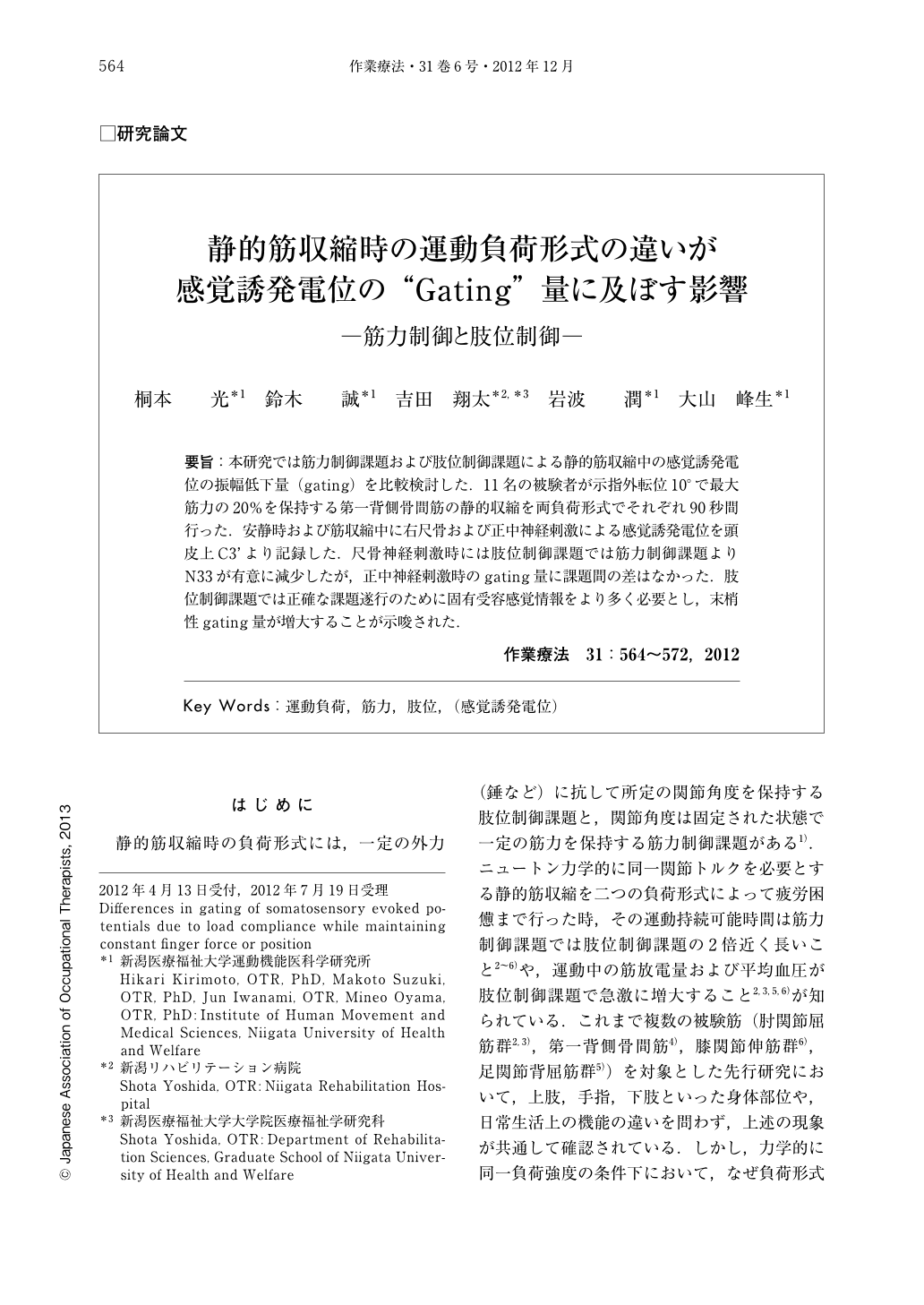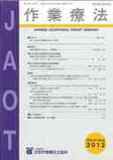Japanese
English
- 販売していません
- Abstract 文献概要
- 1ページ目 Look Inside
- 参考文献 Reference
要旨:本研究では筋力制御課題および肢位制御課題による静的筋収縮中の感覚誘発電位の振幅低下量(gating)を比較検討した.11名の被験者が示指外転位10°で最大筋力の20%を保持する第一背側骨間筋の静的収縮を両負荷形式でそれぞれ90秒間行った.安静時および筋収縮中に右尺骨および正中神経刺激による感覚誘発電位を頭皮上C3'より記録した.尺骨神経刺激時には肢位制御課題では筋力制御課題よりN33が有意に減少したが,正中神経刺激時のgating量に課題間の差はなかった.肢位制御課題では正確な課題遂行のために固有受容感覚情報をより多く必要とし,末梢性gating量が増大することが示唆された.
When an individual performs a submaximal isometric contraction, there are two different load types which produce either a constant force against a rigid restraint (force task) or maintain the position against a constant load (position task). Previous studies have reported that the time to task failure for a submaximal contraction was twice as long in the force task compared with the position task. Sensory feedback processing may contribute to these differences. The purpose of the current study was to determine the influence of load compliance during muscle static contraction tasks on the gating effect, i.e., attenuation of somatosensory-evoked potentials (SEPs) during the motor task. Eleven healthy subjects contracted the right first dorsal interosseous muscle by abducting their index finger 90 seconds either to produce a constant force against a rigid restraint by 10 degrees (force task) or to maintain a constant position against a constant load of 20% of maximum contraction (position task). Visual feedback was provided during both tasks. SEPs were recorded from C3' (2 cm posterior to C3) by stimulating either the right ulnar or median nerve at the wrist while subjects maintained contraction. The amplitudes of N33 were significantly reduced during isometric contraction of both force and position tasks. The reduction of the N33 amplitude was significantly larger during position task than force task only when the ulnar nerve but not the median nerve was stimulated. These results suggest that the position task causes more inhibitory effects on the somatosensory cortex compared with the force task. Larger gating effect in the position task could imply that maintaining the position of the index finger while supporting a constant load requires more proprioceptive information from the group Ia afferents with which the enhanced gating of centripetal mechanism would occur.

Copyright © 2012, Japanese Association of Occupational Therapists. All rights reserved.


